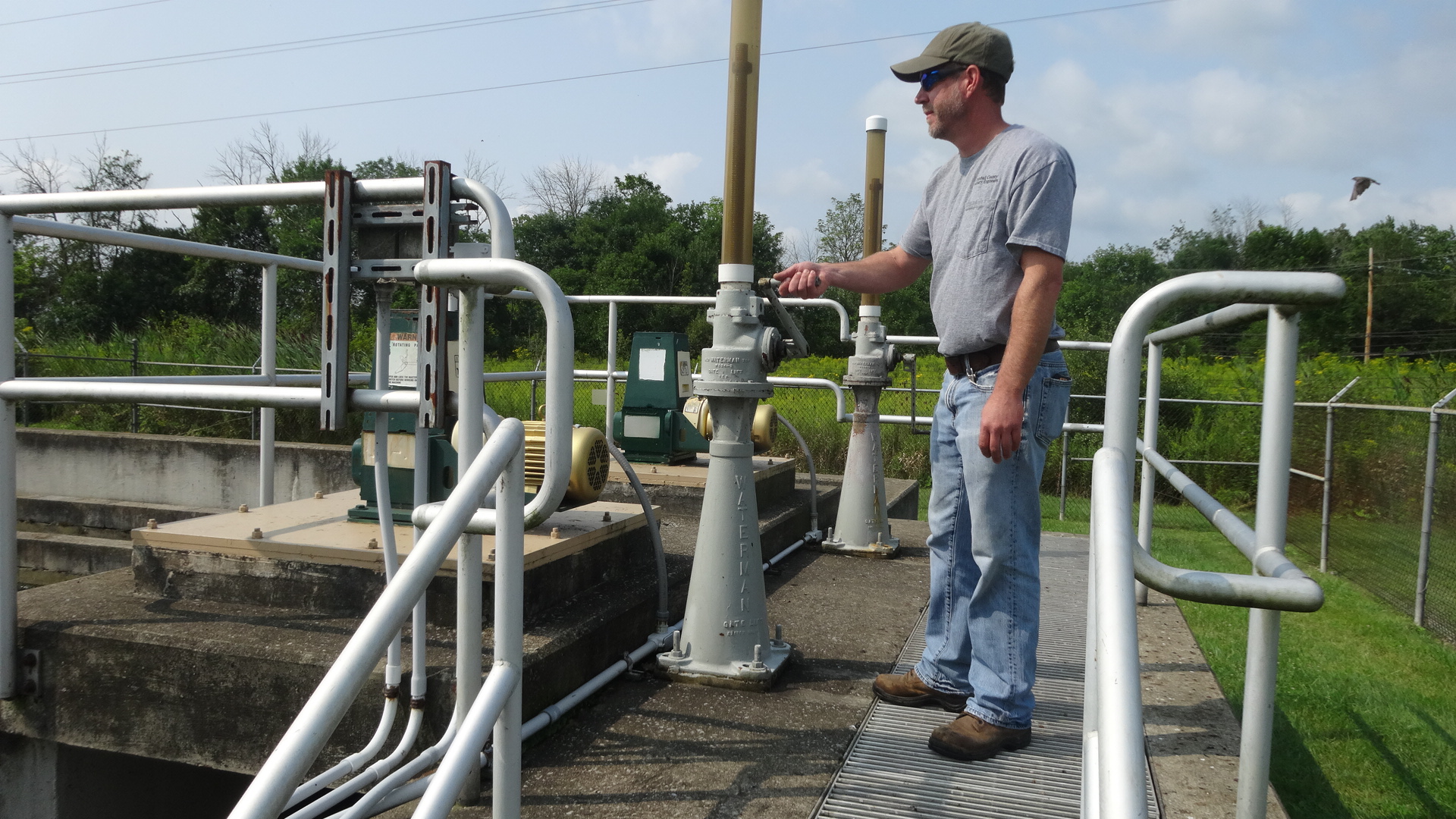Trumbull County is planning a multi-million-dollar upgrade to the Brookfield Wastewater Treatment Plant but, unlike with some regional treatment plants that have been upgraded, it’s not being done under notice that the plant has violated state or federal regulations, said Scott Verner, special projects director and chief design engineer for the Trumbull County Sanitary Engineers.

Dave Armstrong, chief operator of the Brookfield Wastewater Treatment Plant, is shown at the chlorine contact tank, one of the processes that will be removed in a plant renovation.
“The plant and the equipment here is beyond its useful life,” said plant Superintendent Bill Durst.
Some of the processes used at the plant also have exceeded their useful life.
The plant at the end of Standard Avenue, by the Route 62 and 82 cloverleaf, was built in 1962 and upgraded in 1988. A couple of key processes that were allowed in the ’80s now are frowned upon, and the upgrade will address them: the chlorine disinfection system will be replaced by ultraviolet disinfection; and the swirl concentrator, a bypass system that partially treats excess water when severe storms dump lots of rainwater that gets into the sanitary sewer system, will be removed and replaced by a detention basin.
Replacing the disinfection system allows the county to get rid of the handling of a dangerous chemical, and also eliminates the risk of water with too much or too little chlorine in it from entering the environment, Durst said. Ultraviolet light sterilizes the bacteria that is in the water discharged from the plant, rendering it unable to reproduce, he said.
The proposed 2.4 million-gallon detention basin will hold wastewater until it can be wholly treated. Durst said the plant typically only gets four to six rains a year that are heavy enough to trigger the partial treatment system, although the fact sheet available online through the Ohio Environmental Protection Agency lists from 9 to 29 bypass events a year between 2011 and 2015.

Jim Satterlee
Not all of the plant is outdated. Officials noted the plant’s vertical loop reactor, which is rare in Ohio treatment plants, removes phosphorus and nitrogen from the water, nutrients that have come under scrutiny from environmental officials.
The upgrade will not increase the plant’s treatment capacity of 1.3 million gallons a day with the ability to handle 4.6 million gallons a day during heavy flow days.
The work has to be done by June 30, 2021, when the county’s discharge permit with the Ohio EPA expires, Verner said. The county has received proposals from companies who want to design the upgrade – estimated last year at more than $17 million – and is negotiating a contract with one of them, he said.
The plant serves about 3,600 homes and businesses in Brookfield and Masury, and a small portion of Hubbard Township. Treated water is discharged into Yankee Creek, while partially treated solids are taken to the county’s Mosquito Creek plant for final treatment, and then landfilling, Durst said.
The Mosquito Creek plant also will be upgraded; the project is in the design phase.
The Brookfield project will be funded by a low-interest loan from the state. The term is likely to be 25 years and Verner noted the current interest rate is 1.58 percent, but that will change with the market by the time the county takes out the loan.
“It will affect rates,” he said of customer bills, which last were hiked in 2013 or 2014.
However, it is not known how it will affect rates. The loan payments will not have to begin until after the project is complete and a rate study has been put on hold “until we get a better idea of what the actual project costs will be,” Verner said.
“We will get a better handle on these numbers once we get into the design, which will also provide us a better timeline of construction and completion,” he said.
While so-called clearwater connections – such as home downspouts and drains – are not allowed, many connections were made years ago and the county is not pursuing eliminating those connections.
“It’s a private property issue,” Durst said.
The biggest problem is with footer drains, and removing them would require digging up foundations and sump pumps, something that could cost $5,000 to $20,000 per home, he said.
“We’re trying to do everything we can on the public sector side of the collection system to eliminate clearwater connections,” Durst said, such as inspecting manholes and sewer lines to make sure they are sound and are not letting storm water into the system.
The county recently installed a backup generator at the plant to keep it operating during power outages.








